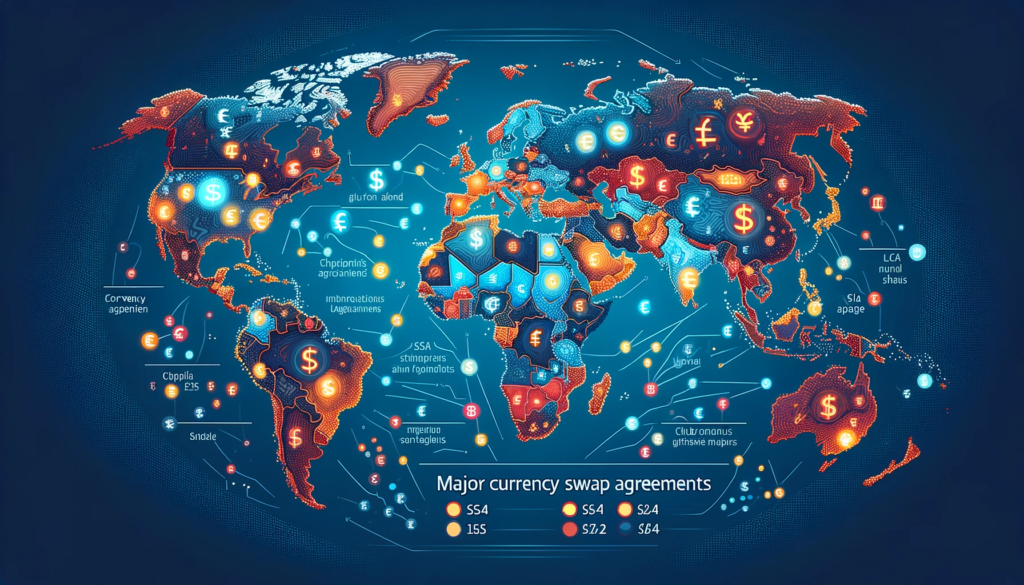Currency swap agreements, a critical tool in international finance, have been pivotal in stabilizing economies and fostering bilateral relationships. This blog delves into the mechanics, history, and recent developments in currency swap agreements, specifically focusing on the renewed agreement between Japan and India.
What is a Currency Swap Agreement?
A currency swap agreement is a complex financial transaction where two parties exchange equal amounts of debt in different currencies, along with the associated interest payments. This tool serves multiple purposes: it allows entities to secure funding in foreign currencies at more favorable rates, provides a hedge against currency fluctuation risks, and facilitates international trade and investment. The structure of these swaps varies, with arrangements including fixed-to-fixed, fixed-to-floating, and floating-to-floating interest rate exchanges.

Historical Perspective
Currency swaps have played a vital role in stabilizing global financial systems, particularly during times of economic turmoil. Historically, these agreements have been critical in providing liquidity and preserving financial stability during crises like the 2008 global financial downturn and the recent COVID-19 pandemic. By establishing swap lines, central banks have been able to inject much-needed foreign currency into their banking systems, preventing widespread financial distress and supporting economic recovery.

The India-Japan Currency Swap Agreement
The recent renewal of the Bilateral Swap Arrangement between Japan and India marks a significant milestone in financial diplomacy. This arrangement enables the exchange of local currencies between the two nations for US dollars, up to a significant limit. This agreement is not just a financial instrument but also a symbol of trust and economic partnership, aimed at bolstering both countries’ financial stability and contributing positively to the broader regional and global economic landscape.

Benefits and Risks
While currency swap agreements offer substantial benefits like mitigating currency risks and reducing borrowing costs, they are not without their challenges. These agreements carry inherent risks such as counterparty risk, where one party may fail to honor the contract, and market risks including interest rate fluctuations and exchange rate volatility. Navigating these risks requires careful planning, robust risk management strategies, and a clear understanding of the global financial landscape.

Global Impact
Currency swap agreements extend beyond their immediate financial impact, reflecting deeper economic relationships and mutual dependencies between countries. Such agreements symbolize a commitment to financial stability and cooperation on a global scale. The networks created through these swaps are integral to the smooth functioning of international finance, facilitating liquidity in times of need and reinforcing economic ties between participating countries.

Conclusion
The intricate world of currency swaps represents more than just financial transactions; it’s a realm where economics intertwines with diplomacy, and fiscal strategies align with geopolitical alliances. The renewed currency swap agreement between Japan and India exemplifies this synergy, showcasing how nations can leverage financial instruments for mutual benefit and stability. These agreements are vital cogs in the machinery of global finance, offering a buffer against economic uncertainties and fostering resilience in international markets. As we navigate an era marked by rapid economic changes and challenges, the strategic use of currency swaps stands as a testament to the power of cooperative economics and the unyielding quest for global financial stability.
Author’s Note: Delving into the complexities of currency swap agreements reveals their importance in global finance. The Japan-India BSA, in particular, is an incredible case study of international cooperation and economic strategy.
G. C., Ecosociosphere contributor.
References
- “Currency Swap – Wikipedia.” Currency Swap – Wikipedia
- “Currency Swap Contract – Corporate Finance Institute.” Currency Swap Contract – Definition, How It Works, Types
- “Central Bank Currency Swaps Tracker – Council on Foreign Relations.” Central Bank Currency Swaps Tracker
- “Currency Swaps – Finance Strategists.” Currency Swaps | Definition, Types, Mechanics, Pros, and Cons
- “Renewal of Bilateral Swap Arrangement between Japan and India – Ministry of Finance Japan.” Renewal of Bilateral Swap Arrangement between Japan and India





Comments
Your point of view caught my eye and was very interesting. Thanks. I have a question for you.
I don’t think the title of your article matches the content lol. Just kidding, mainly because I had some doubts after reading the article.
Thank you for your sharing. I am worried that I lack creative ideas. It is your article that makes me full of hope. Thank you. But, I have a question, can you help me?